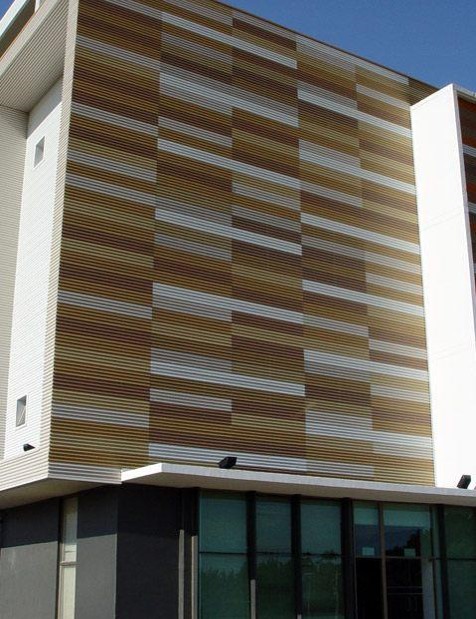Top 4 Types of Architectural Facade Treatment
Facade treatments are used to improve the appearance, durability, and functionality of a building’s exterior surface. They are crucial for both new and existing buildings, as they can improve energy efficiency, reduce maintenance costs, and enhance the overall aesthetic value of a structure. A roofing sheet manufacturersfacade manufacturer provides treatments which also help to create a more comfortable interior environment - regulating temperature, minimizing noise pollution, and improving air quality. While these functions are some of the reasons why facades are a popular feature to utilize, they are also often incorporated into buildings for purely visual purposes.
4 types of facade treatments to choose from to add value to the building structure
1. Lightweight Facade Treatment
This type of facade treatment mainly refers to exterior cladding materials and systems that are relatively lightweight, easy to maintain, and have a low impact on the environment. It is a very versatile option for architects and builders to use, typically in glass or metal materials such as zinc wall cladding. This is mainly because the installation process is relatively simple, which in turn reduces costs and time by a substantial margin. There are a few ways it is good for the environment. Lightweight facade materials can be an eco-friendly option as they require less energy to make and move, which limits the carbon footprint of the building.
2. Heavyweight Facade Treatment
Heavyweight facades provide a conventional and durable option for buildings that require a long-lasting exterior cladding. While they may be more expensive and require more maintenance than lightweight options, they can enhance the aesthetic and prestige of a building and provide a long-term investment in durability and performance. This type of treatment would also require more specialized equipment and time, which explains why it's more expensive. They are also heavy and can require more robust structural support, which can add to the cost and complexity of a building project.
3. Prefabricated Facade Treatment
This type of treatment refers to materials and systems that are manufactured off-site and then assembled on-site. These treatments are often used on buildings with a modern or contemporary architectural style, as well as in structures where speed of construction and quality control are important considerations. Prefabricated treatments make for much lower costs and a faster project timeline. They also offer a high degree of design flexibility, as they can be customized to meet the needs of a specific project. However, they may be a bit limited in terms of size and shape, which can impact design options.
4. Traditional Facade Treatment
This type of treatment has been used for a long time. It's often used on buildings with a classical or traditional architectural style, as well as in the structures where durability and timelessness need to be kept in mind. This type of treatment may be more expensive and require more maintenance than some of the more modern options, as they may require periodic repairs and repainting. If the building requires a more classic and elegant exterior cladding, then this is probably the ideal treatment to go for.
While these are all very popular choices when it comes to facade treatments, there are many variables that come into play when you are picking one for a building. From the base type of the building - whether it’s a high rise, or a low-rise building - to the interior requirements. It is important to enlist a trusted supplier for facades and roof sheets in India to ensure you get the perfect architectural solutions for your building.



